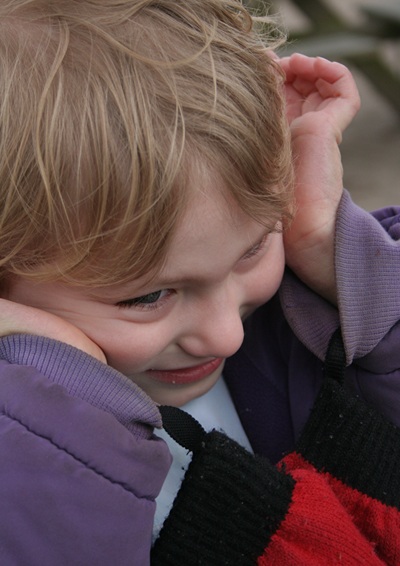From Behavior to Belonging: How ABA Therapy Fosters Social Growth
Applied Behavior Analysis, better known as ABA therapy, has gained widespread recognition for helping individuals with autism and other developmental challenges improve their behaviors and learn valuable life skills. However, beyond simply changing behaviors, ABA therapy plays a powerful role in fostering social growth.
Social connections are vital for all of us. For individuals with autism, building these connections can be more difficult. ABA therapy helps bridge that gap, guiding individuals from focusing solely on behavior to finding a sense of belonging within their communities.
In this article, we’ll explore how ABA therapy services go beyond behavior management to support social growth, helping individuals connect with others, build relationships, and feel like they truly belong.
What Is ABA Therapy?
ABA therapy is a science-based approach to understanding and improving behavior. It’s commonly used to help children and adults with autism, but it can benefit anyone who struggles with behavior, communication, or social skills. The basic idea of ABA therapy is to break down complex behaviors into smaller, more manageable steps and reinforce positive behaviors through rewards and encouragement. This structured approach helps individuals learn essential skills that can improve their quality of life.
While ABA therapy is often associated with managing behaviors like tantrums, aggression, or difficulty following directions, its impact goes much deeper. ABA therapy also helps individuals develop important social skills, which are key to forming relationships, participating in group activities, and feeling connected to others.
The Importance of Social Skills
Social skills are the foundation of how we interact with the world around us. They help us communicate with others, understand social cues, and build relationships. For individuals with autism, social interactions can be challenging. They might struggle with understanding facial expressions, knowing how to start or maintain a conversation, or recognizing the unspoken rules of social situations. These difficulties can lead to feelings of isolation and make it harder to form meaningful connections with others.
This is where ABA therapy comes in. By focusing on teaching social skills in a step-by-step manner, ABA therapy helps individuals gradually improve their ability to interact with others. Over time, these small improvements add up, leading to more confident, fulfilling social experiences and a stronger sense of belonging.
Teaching Social Skills in ABA Therapy
ABA therapy services are highly individualized, which means the social skills taught during therapy are tailored to meet each person’s unique needs and abilities. Some individuals may need help with basic skills like making eye contact or understanding personal space, while others might be working on more advanced skills like making friends or resolving conflicts.
Here are some of the key social skills that ABA therapy helps individuals develop:
1. Eye Contact and Body Language
Making eye contact is a basic yet crucial social skill. For many individuals with autism, maintaining eye contact can feel uncomfortable or overwhelming. ABA therapy helps individuals practice making eye contact in a way that feels natural and comfortable. Therapists may start with short, simple exercises, like encouraging a child to briefly look at someone’s face while asking for help. Over time, this skill can be strengthened and become more automatic.
Similarly, body language is another key part of social communication. ABA therapy helps individuals learn how to use gestures, facial expressions, and posture to communicate effectively with others. For example, a therapist might teach a child to nod or shake their head in response to a question or to use hand gestures to express their needs.
2. Taking Turns and Sharing
Taking turns and sharing are essential social skills, especially for young children. Whether playing a game, talking to a friend, or working on a group project, knowing how to take turns and share with others is crucial for positive social interactions.
ABA therapy often incorporates games and activities that encourage turn-taking and sharing. For example, during a game of catch or while building with blocks, the therapist might prompt the child to wait for their turn and praise them when they successfully share with a peer. This type of practice helps reinforce the idea that taking turns and sharing lead to positive outcomes, such as making friends or enjoying playtime together.
3. Starting and Maintaining Conversations
For individuals with autism, starting and maintaining conversations can be one of the most challenging social skills to master. ABA therapy breaks this process down into smaller, easier steps. For example, a therapist might first teach a child how to greet someone with a simple “hello” or how to ask someone a question like “What’s your favorite game?”
As the child becomes more comfortable with these basic skills, they can work on more complex conversation techniques, such as asking follow-up questions or making comments related to what the other person has said. Over time, these small steps lead to more natural, flowing conversations that help build connections with others.
4. Understanding and Expressing Emotions
Emotions play a big role in social interactions, but many individuals with autism find it difficult to recognize and respond to their own emotions or the emotions of others. ABA therapy helps individuals learn how to identify different emotions—such as happiness, sadness, anger, or fear—and how to express their own emotions in appropriate ways.
For example, a therapist might use visual aids like picture cards to help a child understand what different emotions look like on someone’s face. They might also teach the child how to communicate their own feelings, such as saying, “I’m feeling angry” or “I need a break.” This understanding of emotions is key to building empathy and forming stronger social connections.
Fostering Social Growth in Everyday Life
One of the most important aspects of ABA therapy is that it doesn’t just happen in a therapy room—it extends into everyday life. The social skills learned during ABA therapy sessions are meant to be practiced and applied in real-world settings, such as at school, during playdates, or while spending time with family.
Here’s how ABA therapy fosters social growth outside of therapy sessions:
1. Natural Environment Teaching (NET)
Natural Environment Teaching (NET) is a technique used in ABA therapy that focuses on teaching skills in the places where they are naturally used. Instead of teaching social skills only in a clinic, therapists work with individuals in their home, school, or community. This allows the individual to practice their social skills in real-life situations, making it more likely that they will use these skills in their everyday interactions.
For example, a child might practice greeting a classmate at school or asking a teacher for help during class. By practicing these skills in the natural environment, the child learns how to navigate social situations more confidently and effectively.
2. Parent and Caregiver Involvement
Parents and caregivers play a vital role in fostering social growth. ABA therapy services often include parent training, where therapists teach parents how to support their child’s social development at home. This might involve practicing conversation skills during dinner, encouraging turn-taking during playtime, or helping the child recognize and respond to emotions during family interactions.
By involving parents and caregivers, ABA therapy ensures that social growth doesn’t stop when the therapy session ends. Instead, it becomes a continuous process that happens throughout the day, every day.
From Behavior to Belonging
Applied Behavior Analysis is more than just behavior modification—it’s about helping individuals feel like they belong. When individuals develop strong social skills, they’re able to form meaningful relationships, participate in group activities, and become part of their community. These social connections are essential for building confidence, self-esteem, and a sense of belonging.
By breaking down social skills into small, manageable steps and providing plenty of positive reinforcement, ABA therapy helps individuals move from focusing solely on their behaviors to becoming active participants in their social world. Over time, these small steps lead to big changes—changes that allow individuals to form lasting friendships, navigate social situations with ease, and feel connected to the people around them.
Conclusion
ABA therapy services are an invaluable tool for helping individuals with autism develop essential social skills that lead to greater confidence and a stronger sense of belonging. By focusing on eye contact, conversation skills, emotional understanding, and more, ABA therapy fosters social growth that extends far beyond the therapy room and into everyday life. Through small, carefully guided steps, individuals move from behavior challenges to forming meaningful relationships, proving that social skills truly can transform lives.








